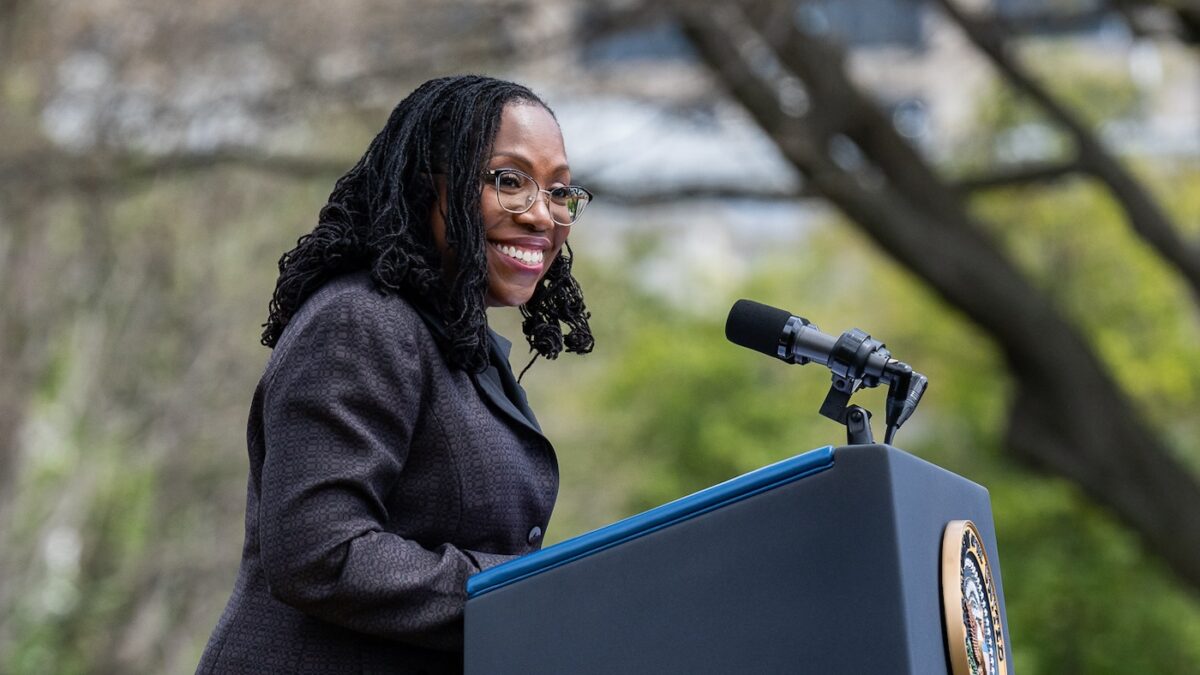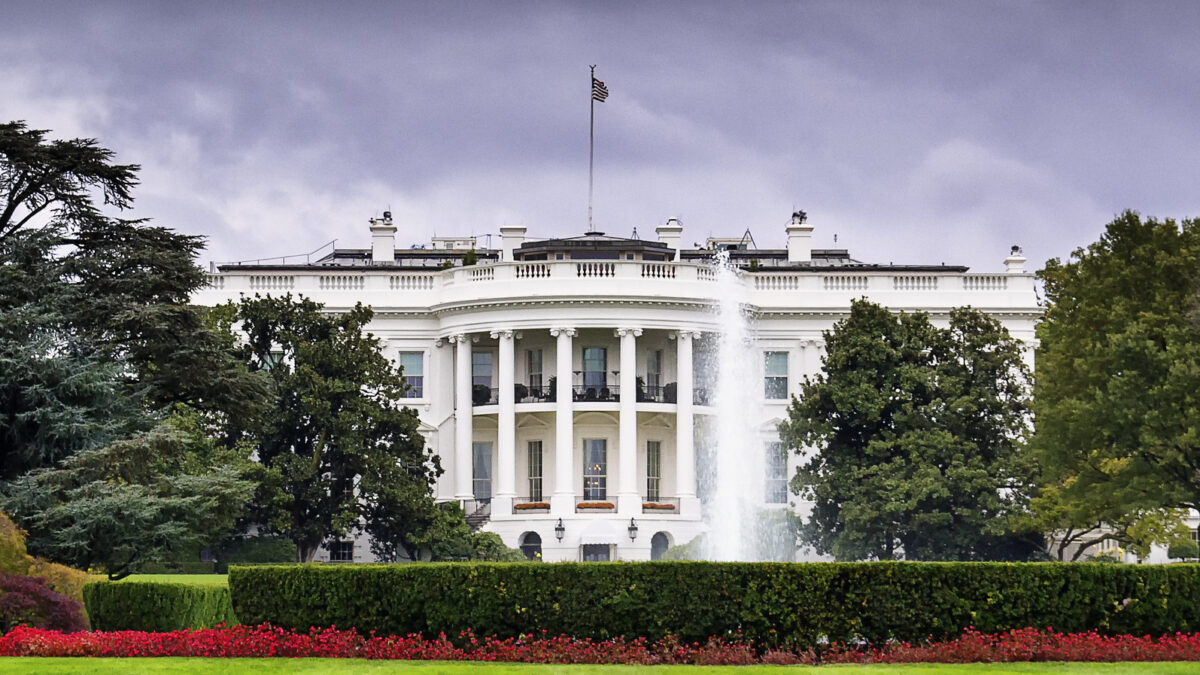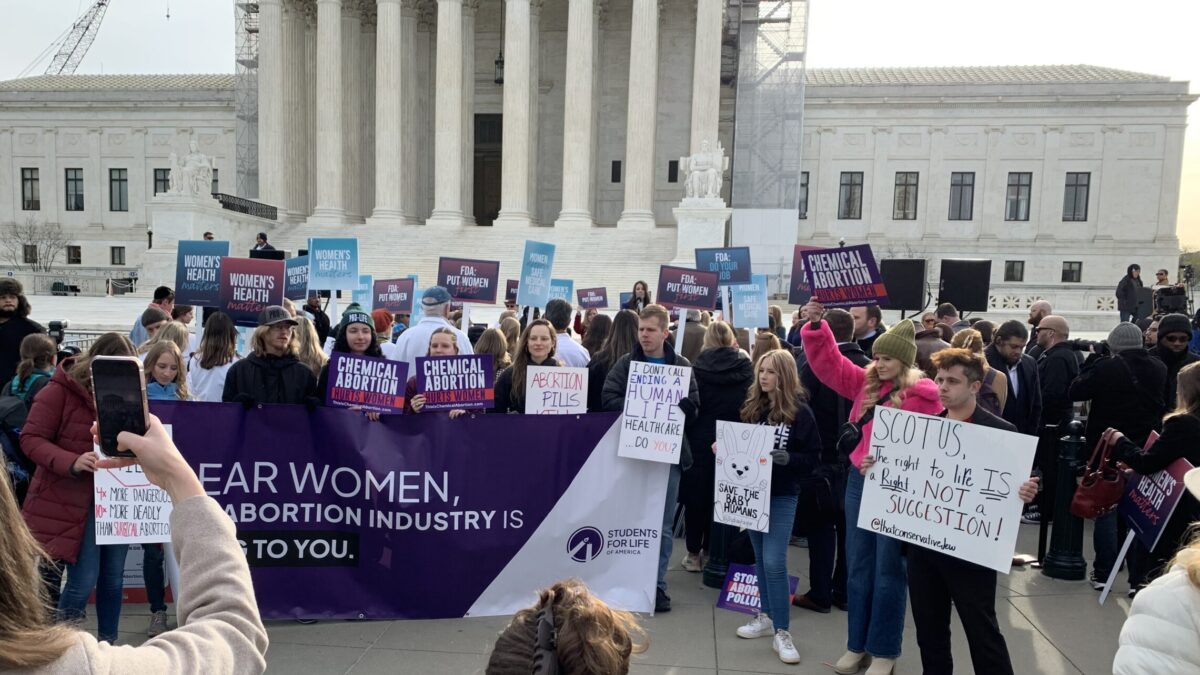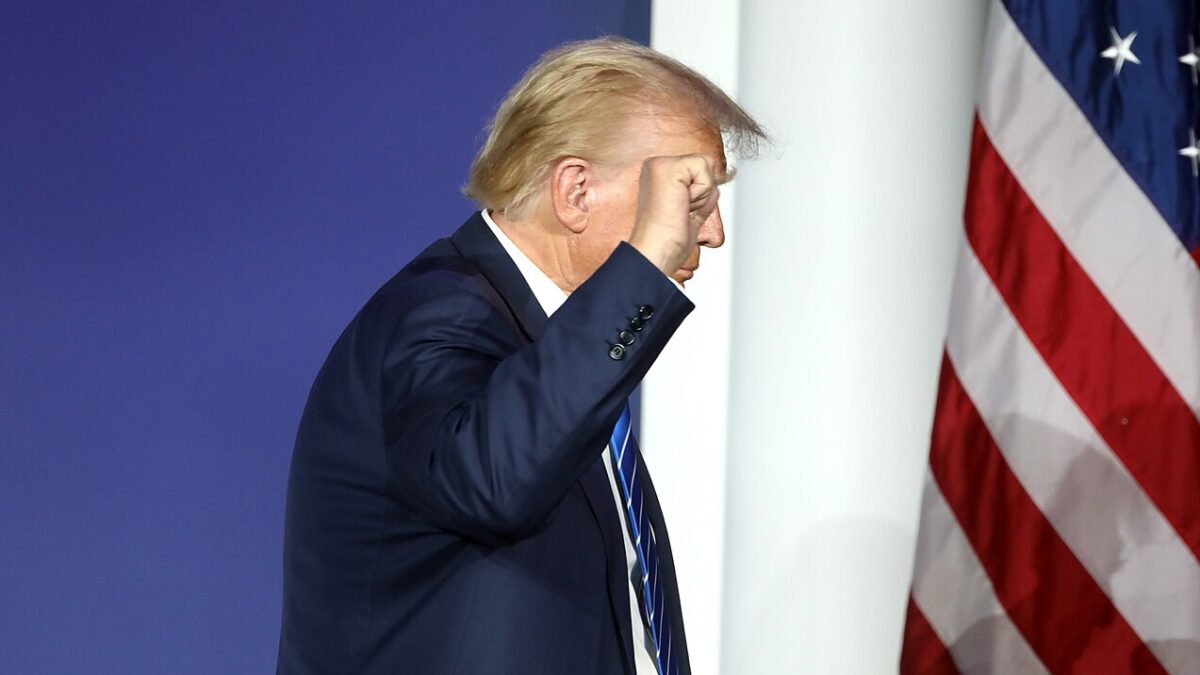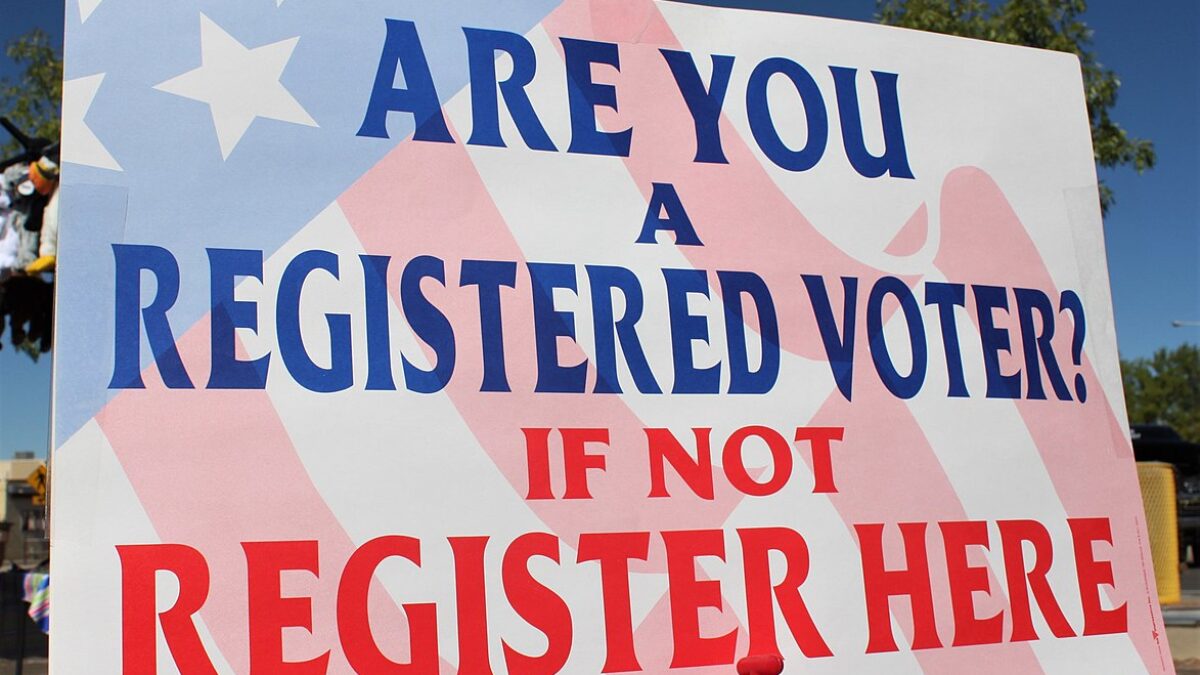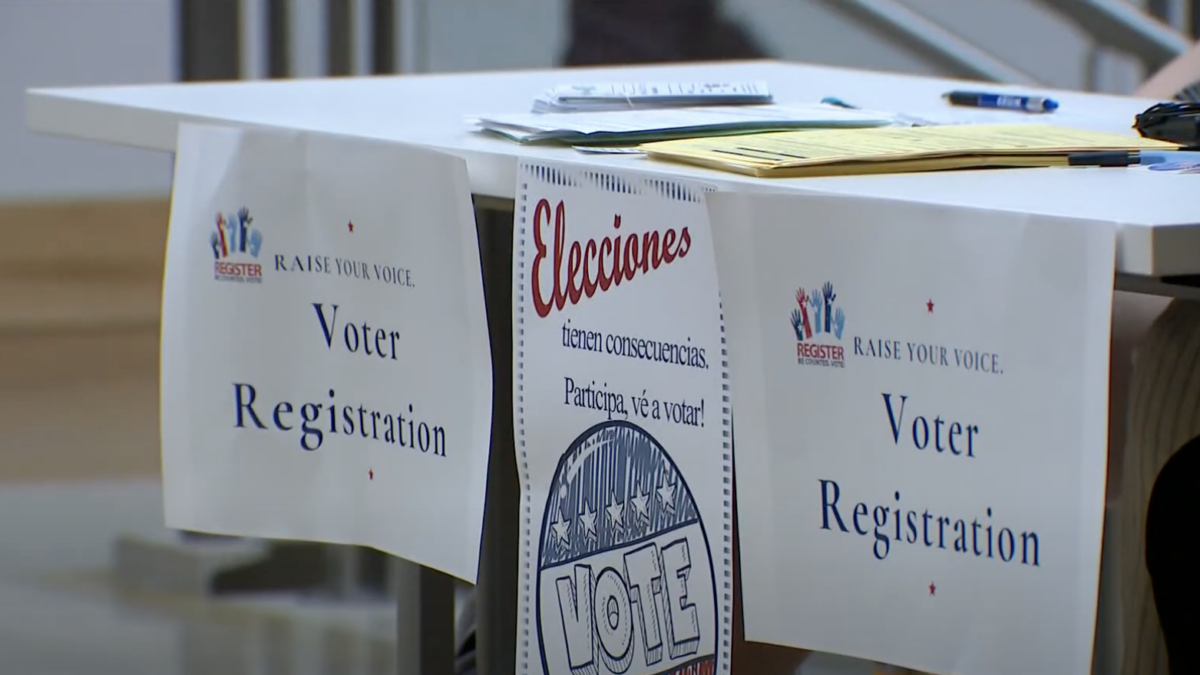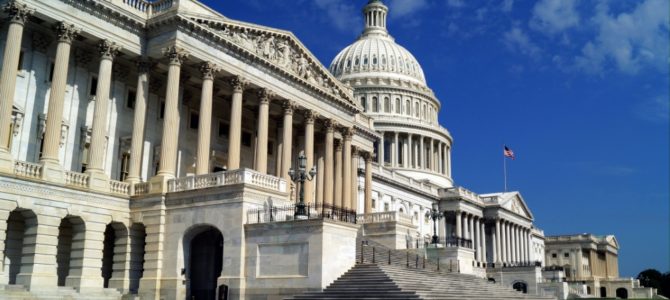
The Senate is fulfilling its basic function at a tipping point in the court’s history. Although much of America appears to have forgotten, the Senate is an equal partner in Supreme Court appointments.
One common talking point is the claim that the Supreme Court is already conservative — or at least already pro-Republican Party. Writing for Vox this summer, Ian Millhiser called it a “very conservative Supreme Court.” Jack Goldsmith recently noted on Twitter that, assuming President Trump gets to put another justice on the court, 15 of the last 19 justices will have bee appointed by a Republican president. In The Atlantic, Alan Rozenshtein writes this supposed Republican dominance, more than any other fact, defines the last half-century of American constitutional law.
They have a point. Roe v. Wade, decided now almost 50 years ago, was a 7-2 decision. Six of the justices on that court had been appointed by Republican presidents. Since that time, despite making the Supreme Court a major focus of political energy and despite a strong combination of winning presidential elections and lucky timing, Roe still stands.
In 1992, Planned Parenthood v. Casey altered but substantially affirmed the holding in Roe. By that time, Republican presidents had nominated eight of the sitting justices on the court.
But Amy Coney Barrett’s nomination generates calls to pack the court when Brett Kavanaugh’s and Neil Gorsuch’s nominations did not. So why is Barrett a tipping point?
Nominations are only half the equation. If we start to look at the other half, the picture of Republican dominance is very different. In 1972, how many of those nine Roe justices were confirmed by a Republican Senate? None. In 1933, the Democrats took control of the Senate with the same political winds that swept Franklin Delano Roosevelt into the White House. Between 1933 and 1981, the Democratic Party controlled the upper house for all but four years, sometimes with large supermajorities. Forty-four years of political dominance, it turns out, yield a lot of fruit.
So what about since then? Since FDR’s presidency, there has never been a majority of justices on the court confirmed by a Republican Senate. Not at any point in time. That is, despite Republicans nominating 15 of the last 19 justices, most went through a Democratic Senate.
Before Kavanaugh replaced Anthony Kennedy, only three sitting justices were approved by a GOP Senate. If Judge Barrett becomes Justice Barrett, then, for the first time in almost 90 years, the majority of the court will have been approved by a Republican Senate.

In this context, the intergenerational fight over the Supreme Court looks less like a series of fruitless Republican victories, and more like a steady, uphill climb. Democratic presidents Roosevelt and Harry Truman made 13 straight nominations to the Supreme Court. All were made to a friendly Democratic Senate. Republicans, in all the years since Eisenhower was elected, have only made nine such nominations. Recovering from FDR-levels of political dominance takes time.
Dealing With An Opposition Senate
Now, of course, this new frame does not explain the whole picture. Republicans often blame the seemingly shifting political principles of their appointments for their disappointing results at the court. They focus on David Souter or Anthony Kennedy as individuals who did not vote as their nominating presidents might have hoped.
Yet Souter and Kennedy were both appointed by Republican presidents who had to deal with a Democratic upper house. In Kennedy’s case, the compromise nature of the candidate was explicit. He was not Robert Bork, that champion of originalism President Reagan first wanted to put in the seat. Souter’s appointment, coming just a couple years later, was surely informed by Bork’s failure to get through a Democratic Senate that had explicitly targeted his judicial philosophy. That is, the reason Kennedy and Souter were confirmed so easily is the same reason they were considered disappointments by many on the right: they were compromise candidates.
Clarence Thomas enters the court in this era as the sole exception: a solid originalist approved by a Democratic Senate. But his 52-48 approval vote came at the cost of a contentious confirmation process.
This shows the subtle nature of the politics involved. A president expends significant political capital in trying to get a nominee approved. If a president wants to appoint a clear, documented, originalist, he better have the votes. If he is not sure if he does, then he is unlikely to even try it.
On the other side of the equation, if a Senate minority knows it cannot block a candidate, it makes sense to vote overwhelmingly in her favor. It looks like bipartisanship and makes it easy to claim later that the other side is “politicizing the process.” But all along, the process is political. Thus, once the Democratic Senate succeeded in blocking Bork, they warmly welcomed Kennedy with a unanimous confirmation vote. His nomination itself was their political victory.
So, as the Republican-confirmed, ideologically conservative percentage of the court grows closer to a majority, the stakes have followed suit along with the opposition. Compare Scalia and Gorsuch. Both were Republican-nominated candidates without a damaging paper trail. Both were sent to a Republican Senate. Scalia was confirmed 97-0, Gorsuch 54-45.
Scalia was appointed to be an originalist holdout in a generally liberal court. He was loved by the right for his fiery dissents. Gorsuch, on the other hand, was the first sign of a possible textual-originalist dominance on the court. As the Republicans have held the Senate during crucial years over the last couple of decades, they have not had to send up any compromise candidates.
In fact, since Roberts, each Republican appointee to a Republican Senate has received a greater number of opposition votes (22 for Roberts, 42 for Alito, 45 for Gorsuch, and 48 for Kavanaugh). Recent history tells us to expect Barrett’s vote to look more like Kavanaugh’s than Roberts’s. The Democrats in the Senate know that Gorsuch and Kavanaugh and Barrett represent a different sort of jurisprudence than Kennedy and Souter — and they can count.
One might ask, is this appropriate? The president gets to nominate a candidate. Barring some ethical or character flaw, perhaps the president’s nominee should be confirmed. Nonsense. These are lifetime appointments that constitute the entire selection process for the least-accountable branch of our government. Why should a single individual have such complete control?
The Constitution splits this responsibility between the upper house of the legislature and the executive. It is right that both of the political branches should have a say in the makeup of the third. It’s a feature, not a bug.
Understanding The Key Role of the Senate
By realizing the Senate has just as much a say in the makeup of the Supreme Court as the president does, we can see behind a lot of the rhetoric and understand the power struggle going on right now. This is not to admit some Machiavellian underhandedness. The people of the United States, together and as parts of their individual states, have voted and given these powers to their elected officials. They expect those officials to struggle against each other. Power divided among different branches is one of the chief jewels of the American Constitution.
Some of the confusion comes from the similarity of the Supreme Court nomination process with the executive officer nomination process, which the American public is much more familiar with. But the key difference is that for executive nominations, the president is picking his personal team. The executive power of the nation is concentrated in a single individual: the president.
So the secretary of the treasury is largely implementing the president’s treasury policy. It makes sense under those circumstances that the president gets to choose someone who will well and faithfully executive the president’s directives.
Judicial nominations are a different beast. Justices are supposed to stop being part of a political team once they reach the bench. That is an admirable and important part of our system. Judicial independence guarantees that when two parties come to court, their case will be judged on the relative legal merits of their arguments instead of the horse-trading economy of a legislature.
Nonetheless, judicial candidates are often appointed because their underlying judicial philosophy tends to accord with a party’s political philosophy. This is different than political affiliation, but only loosely so. Most conservatives would be happy to have nine members of the Green Party sit on the court if these nine men and women all saw the Constitution in the same light Thomas does. Members of the Green Party, however, tend not to.
Perhaps because of the public’s familiarity with executive nominations or perhaps because of a plain desire to hide the underlying power struggle, opposing parties tend to couch their objections to a candidate in other-than-political terms. Thus, we have a whole slew of Republican senators who opposed Judge Merrick Garland because it was “too close to an election.”
A Return to Competitiveness
Some senators, notably Mitch McConnell, added some crucial nuance to that claim by pointing to the nature of a divided government, but many simply said that it was too near an election cycle to make such an important decision. What they meant in 2016 was that they had decided to take a political risk. They knew that President Obama’s nominee would have a judicial philosophy out of step with their own, and, if they waited 12 months, they might get an originalist.
President Obama knew he was essentially in the same position as President Reagan and Bork in 1987. Knowing history, President Obama decided to skip the political embarrassment of seeing his first choice get denied and sent up his Anthony-Kennedy-like compromise candidate: Merrick Garland. Republicans, as they had every right to do, turned the compromise down.
This was a political calculation that could have blown up in their faces. If Hillary Clinton had won the White House and taken the Senate, the Republican Party would be powerless to oppose her nominee. She didn’t, and the Republicans got an originalist instead.
If a Republican Senate confirms one more justice before Election Day, the nation will see the first Supreme Court with a majority of justices approved by a Republican Senate since 1939. Republicans should see that the last 50 years have not been series of stolen victories or constant frustration. Rather, they have witnessed a gradual return to competitiveness.
This article has been corrected since publication.



